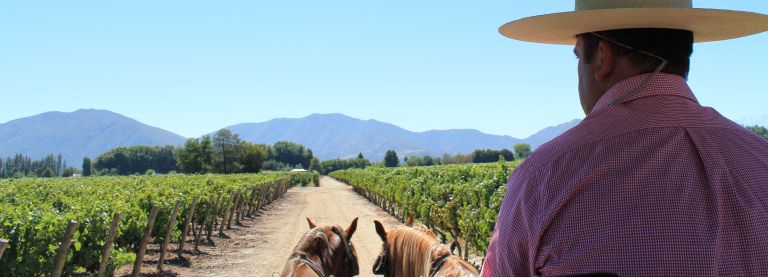The silver lining to Chile’s 2014 harvest
Written for Wines of Chile While the year certainly started on a hard note for Chile with an unexpected and ferocious frost across many of the wine regions, nine months later the wine that has made its way into the wineries is looking promising for a high quality vintage. The difficult start to the vintage […]
36 hours in Santiago: Gourmet Tour
Chile is a foodie’s paradise. With almost all the climates you can ask for, the long stretch of this thin country has mountains, valleys, forests and a massive coastline. But fortunately for those with only a short time on their hands, you don’t need to travel the entire length of the country in search for […]
Mapping out Chilean wine and gastronomy

Written for The International Wine & Food Society There aren’t many places that can boast the prodigious geographical diversity of Chile: deep forests buffeted by creeping glaciers; sun cracked deserts and white washed salt flats; snowcapped mountains, smoking volcanoes and the dizzying heights of the Andes; fertile valleys with rolling hillsides; and an enviable expanse […]
Southern Cone Harvest Report 2013
Written for The Drinks Business With most of Argentina experiencing outstanding quality and Chile encountering one of the strangest harvests in their recent history, this year’s harvest has been remarkable. Across Argentina the flowering period and harvest went by almost without a climatic hitch. In Mendoza, where the sun shines on average more than 300 […]
The Story of Chilean Malbec

Written for WinesOfChile.org Most people associate Malbec with Chile’s neighbour, Argentina, but little do they know that Chile has a possibly even longer history with the tasty varietal. There are some beautiful, gnarly old vines across the country and research by Pablo Lacoste actually suggests that the first Malbec vines arrived in Chile in […]
Chile Through a New Lens: Photographer Matt Wilson
Written for WinesofChile.org A world-renowned photographer is portraying Chile’s wine world in a new light. Former rock and skateboard photographer Matt Wilson might be the bad boy of wine photography, but his emotive pictures are certainly turning heads and gaining him accolades along the way. The winner of the Born Digital Photography Wine Award 2012, […]

